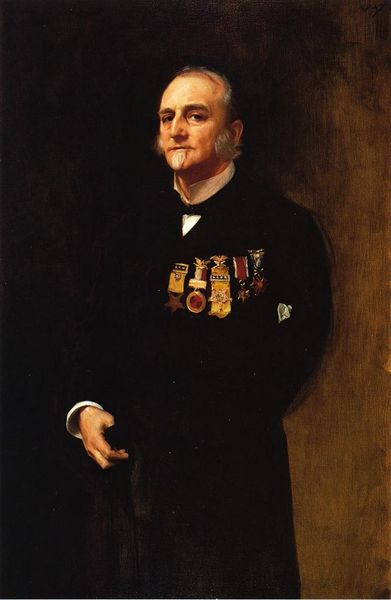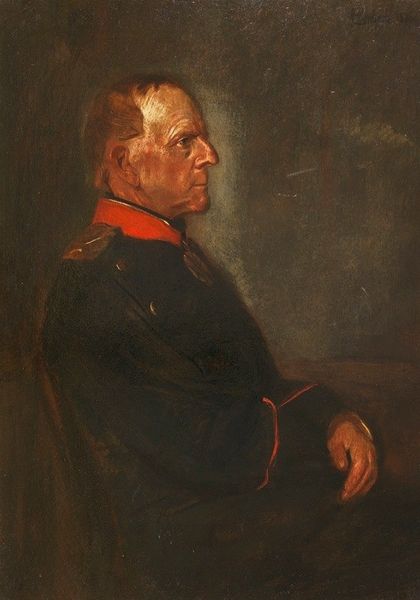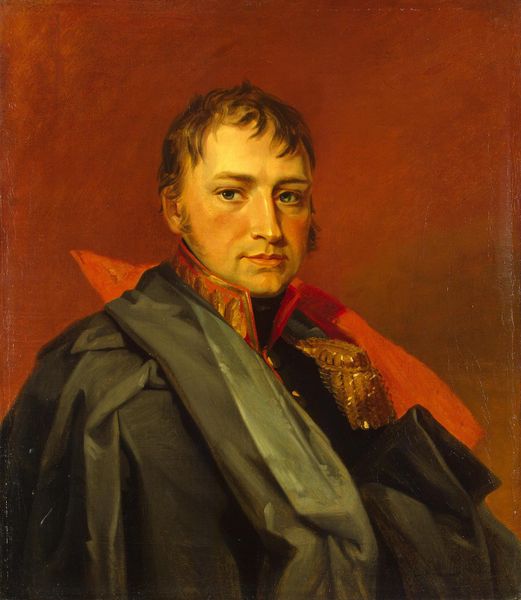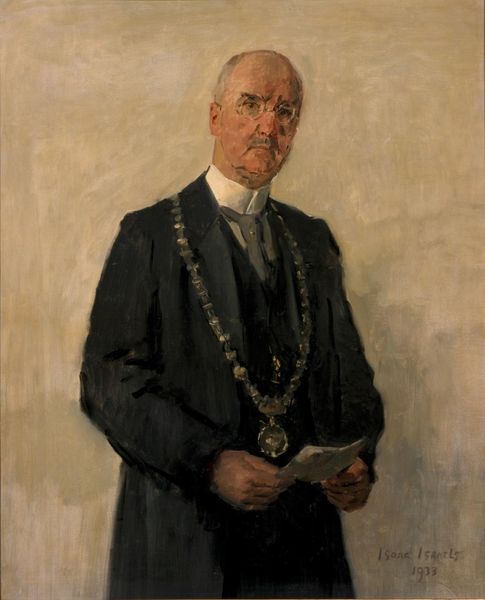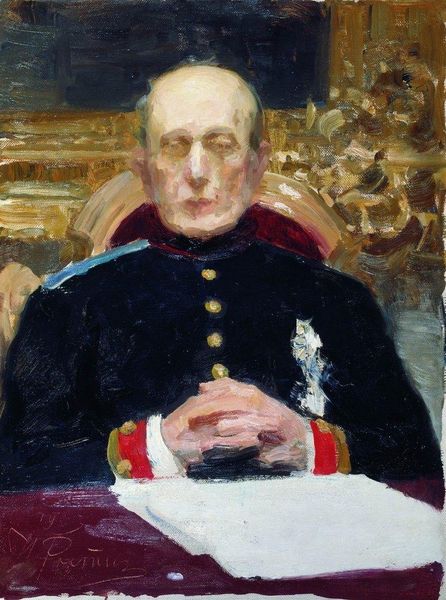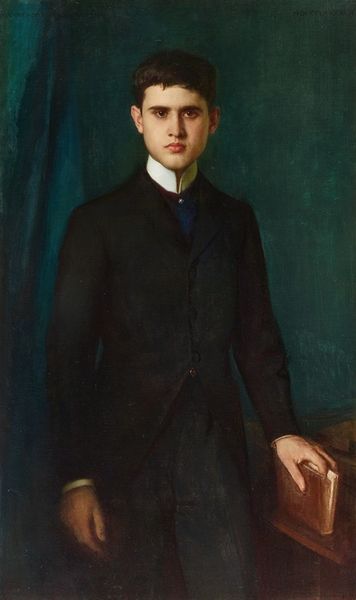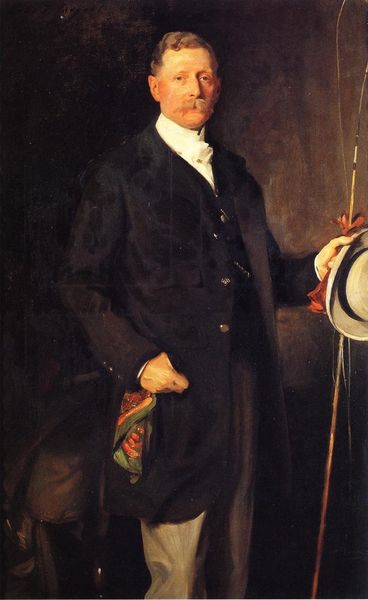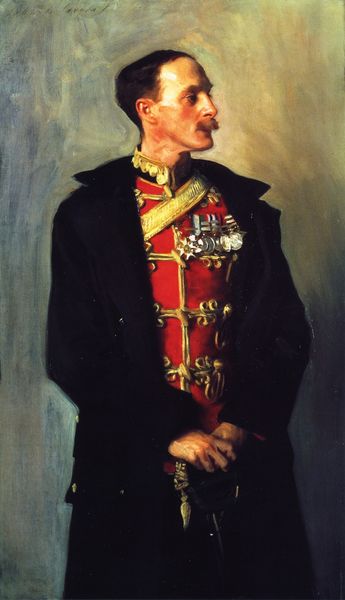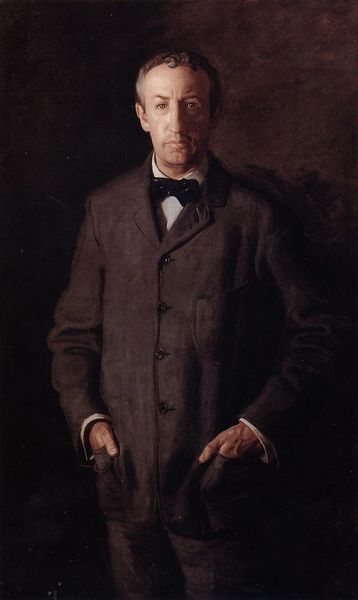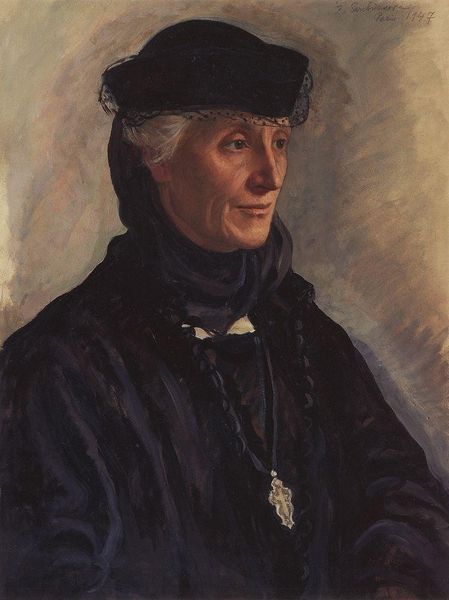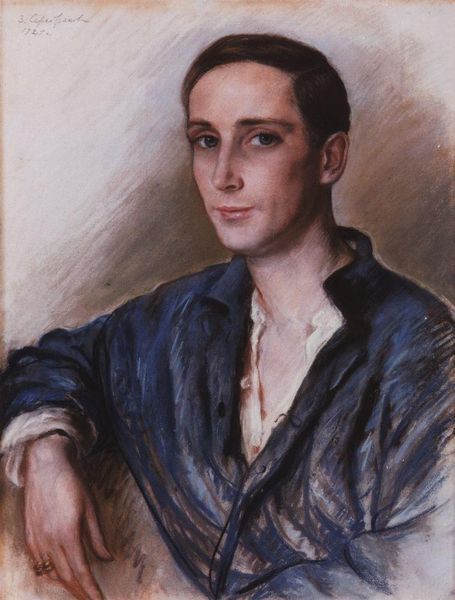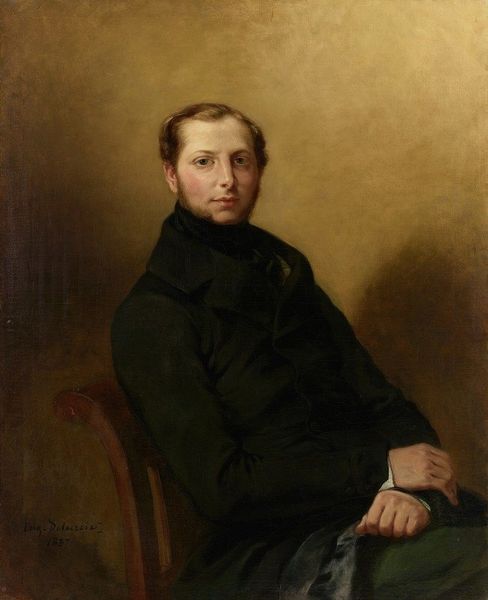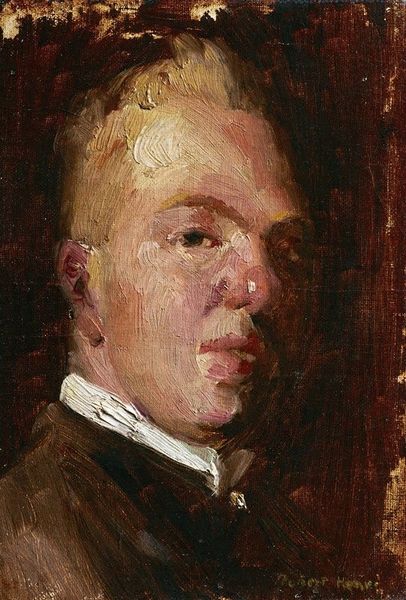
oil-paint
#
portrait
#
oil-paint
#
academic-art
#
realism
Copyright: Public domain
Curator: Painted in 1923 by Philip Alexius de László, this is a portrait of John Loader Maffey, 1st Baron Rugby. De László was a popular portraitist among European royalty and elites of the early 20th century. Editor: My first impression is one of reserved power, there is such an air of aristocratic detachment here. The dark, almost somber, color palette contributes to that feeling. Curator: Absolutely. De László's portraits were commissions. Maffey held several prominent positions in the British Colonial Office, he later became the Governor-General of the Sudan, then the British Ambassador to Belgium. We are clearly meant to perceive him as an establishment figure. Editor: And you see how his gaze avoids direct eye contact. Is this modesty, a studied aloofness, or an intentional power play suggesting the subject is used to holding all the cards? His posture speaks to someone deeply confident, perhaps to a fault. Curator: Interesting perspective. Considering Maffey's involvement in colonial administration, his averted gaze can symbolize detachment from those affected by imperial policies. Editor: Precisely. The medals are rendered in such delicate detail, but the person is obscured behind a mask of impassivity. I think it draws into question ideas around individual virtue and meritocracy at that historical moment. What price were people paying for someone to be presented in this manner? Curator: It does force us to reflect on the structures of power and privilege. The formal language of academic portraiture has always been used to legitimize power. Editor: Well, I leave with many reflections, mostly about the historical weight of a single gaze refusing to meet my own. It is a potent message, even today. Curator: A testament to how portraits, regardless of their aesthetic value, capture their own history.
Comments
No comments
Be the first to comment and join the conversation on the ultimate creative platform.
